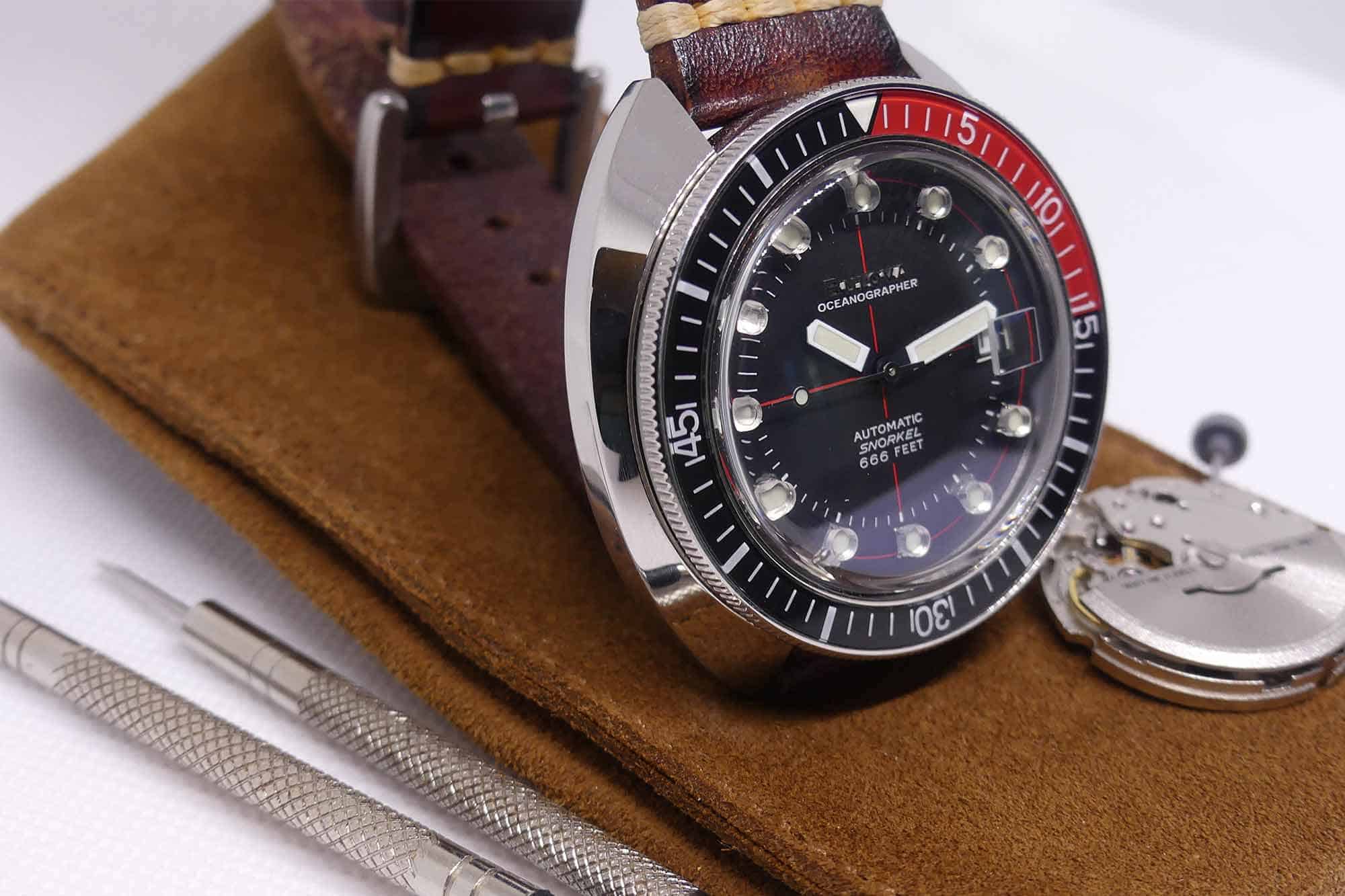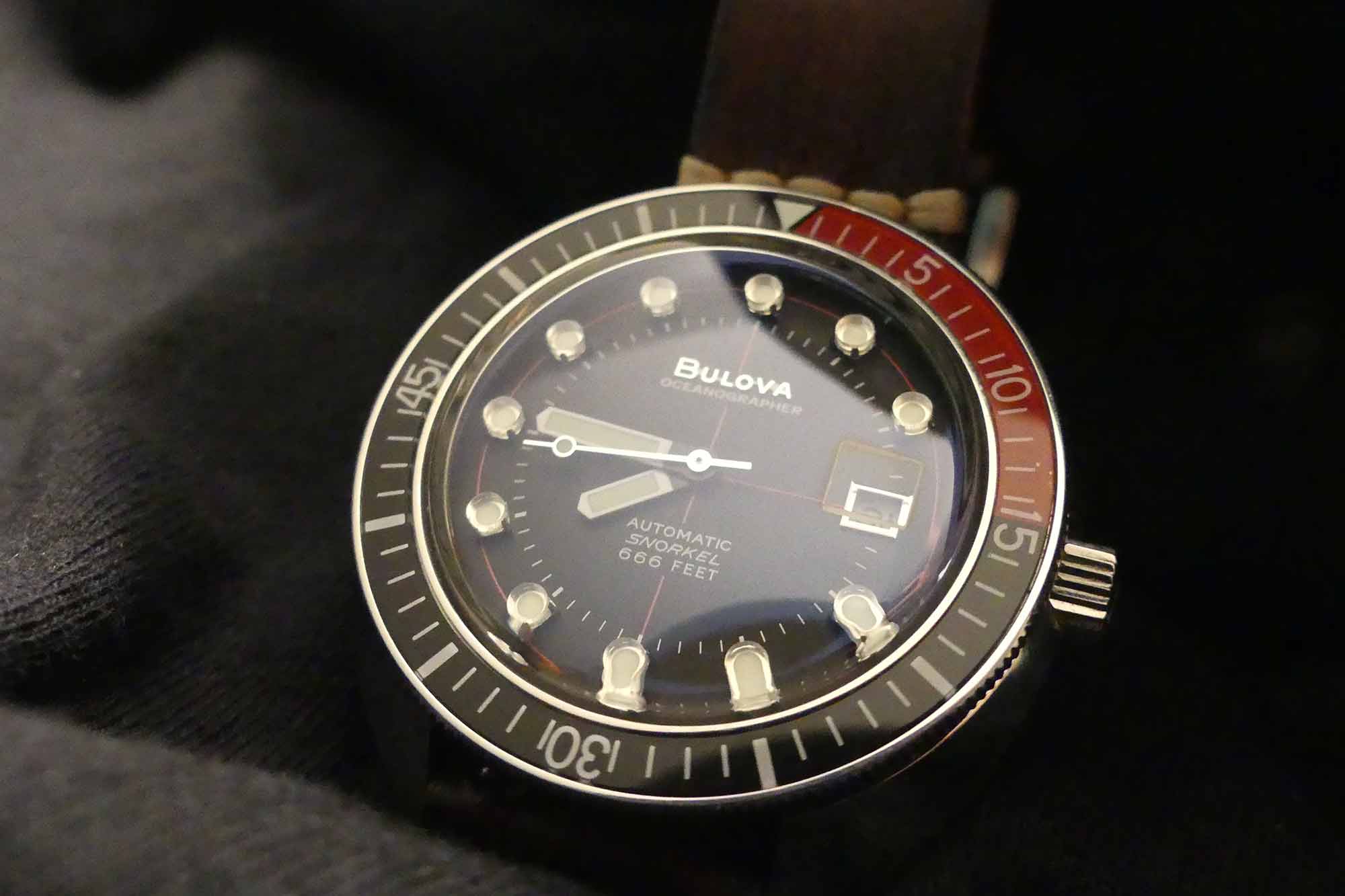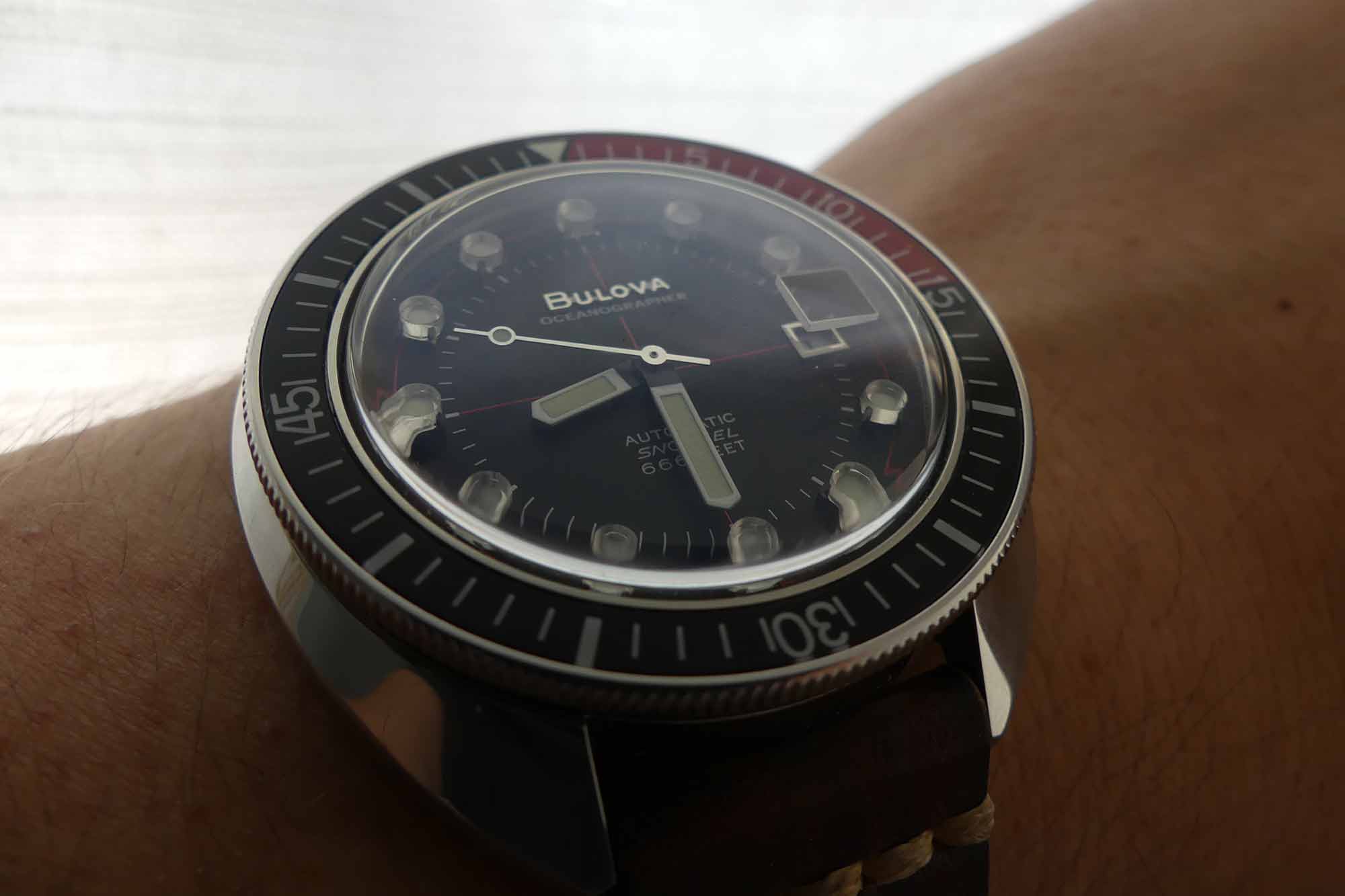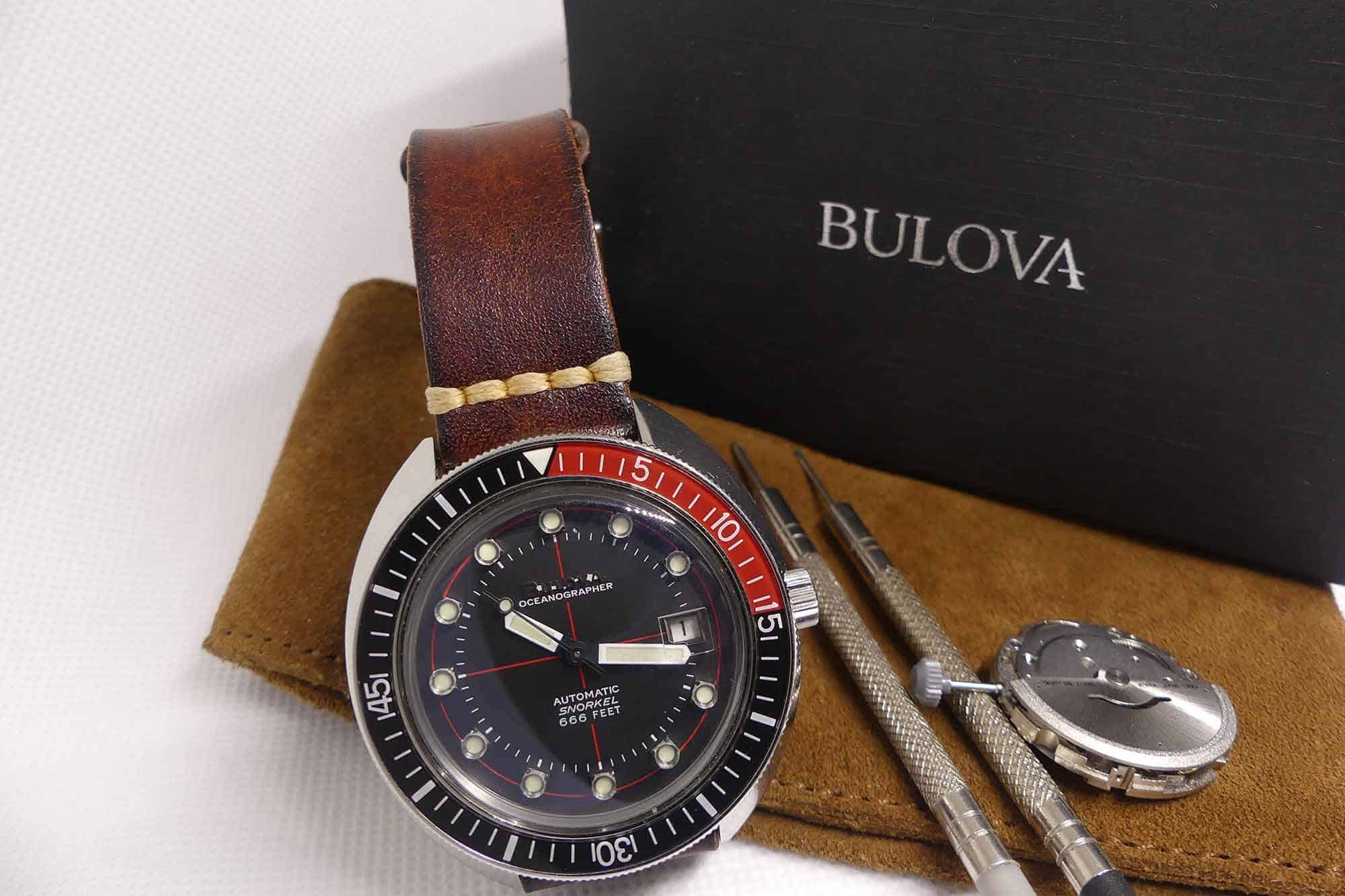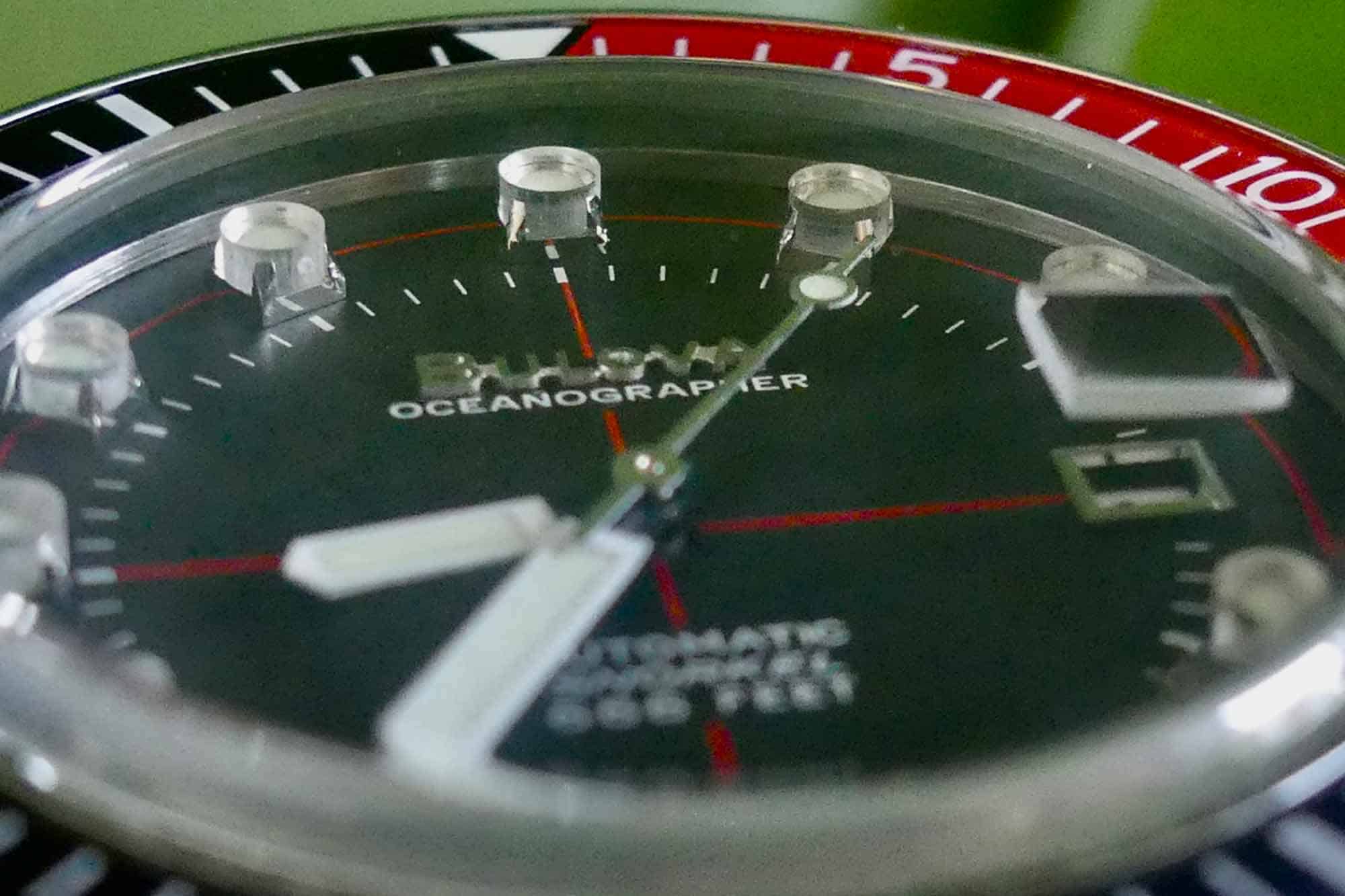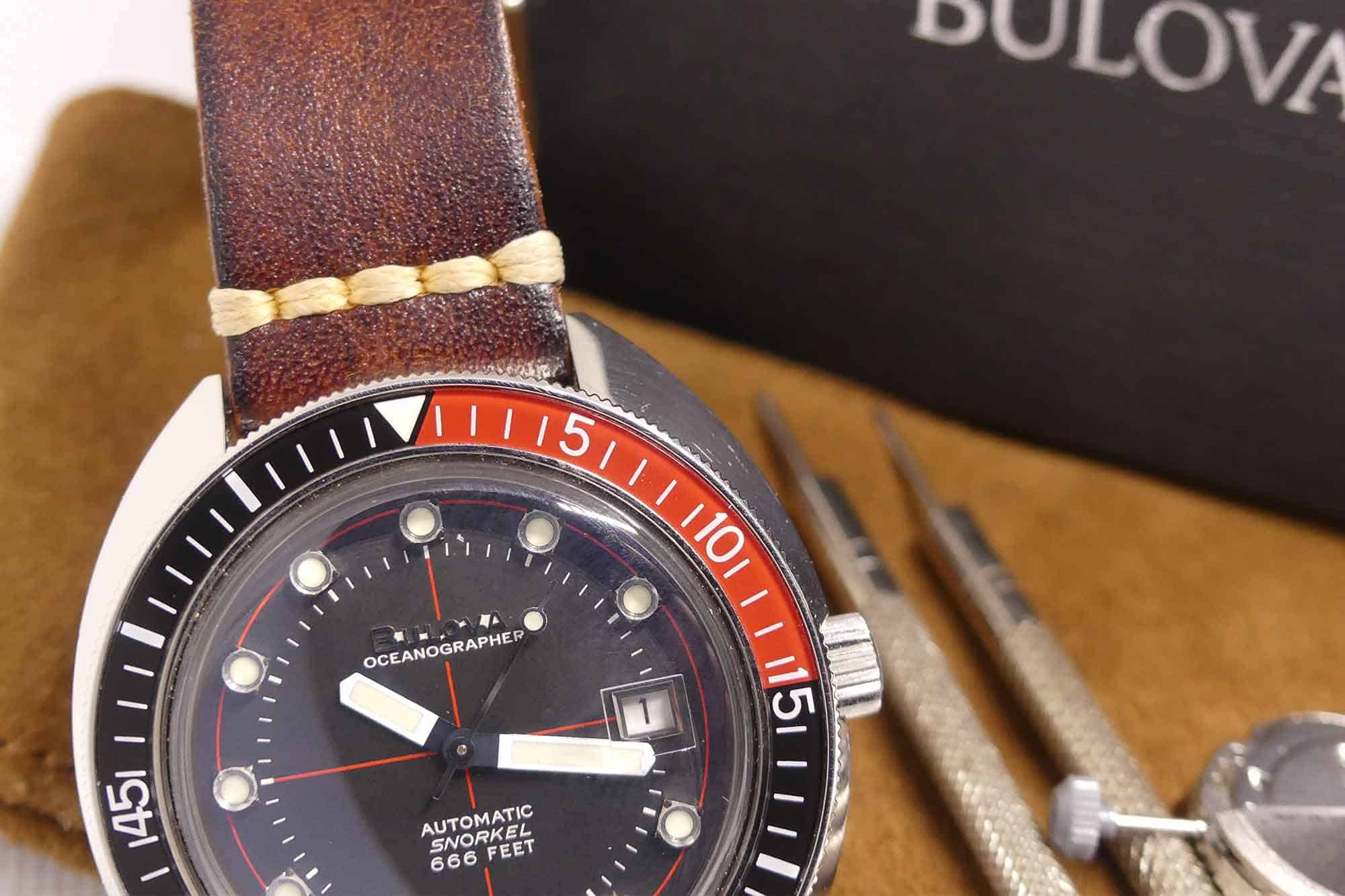Watch collecting has a few rites of passage: Buying an Invicta on vacation. Eagerly purchasing too many watches and quickly filling a watch box. Experiencing buyer’s remorse and selling those watches to recover funds for future purchases. Seller’s remorse setting in, followed by repurchasing watches. With one exception, the Bulova Oceanographer helped me check all of those boxes.
I purchased my first Oceanographer during the buying/selling frenzy many enthusiasts go through. Seeing watches in stores and at meetups is cool, but can’t compete with the experience of ownership. Ownership removes the fear of scratching a watch while learning how it feels in 90% humidity. It allows you to test if a bezel still turns after a day at the beach, and to find those annoying design flaws that only become apparent after a few days on the wrist.
Owner’s Review: Happy Compromises with the Bulova Oceanographer
Stainless steel
Miyota 821D
Black
Yes
Sapphire
Bracelet/rubber strap
200 meters
44 x 46mm
15mm
20mm
Screw down
Yes
$750
For a couple years, I had a watch coming and going every month. It was a constant game of hunting for opportunities, always selling, trading and buying. Sometimes I’d make $50, sometimes I’d lose $50. Sometimes I’d organize a trade on Reddit, and anxiously wait to see if the person on the other end of the deal was scamming me (they never were). My goal was to experience as many watches as possible, in the way that only ownership allowed.
One of these first watches to pass through my watch box was a green dial Bulova Oceanographer, more commonly known as the Devil Diver thanks to the “666 feet” printed on the dial. This modern-day interpretation of the 1970’s classic was rereleased in 2018, and the subsequent buzz put it on my radar.
I met this watch early enough in my journey to spoil me, but too early for me to know what I had. I liked the dial, which I now understand is one of the best green dials out there. I liked the case, which I have slowly come to learn is far more comfortable than the average cushion case. Mostly, I liked that it was fun. I mean, come on- what other 15mm thick watch is actually comfortable and has such a badass moniker?
I kept it longer than most watches, wearing it daily for an entire summer, a new record for me. But then another deal came along, and I parted ways with my green-dialed beauty to fund the next purchase.
Through subsequent acquisitions that passed through my collection I chased the qualities I liked about my long-gone Oceanographer, but was never able to recreate the magic. Like a favorite child, it had set the standard, and nothing else could measure up. No other green popped in the same way. No other 44mm case was actually comfortable on a hot summer day. No alias was quite as cool. Eventually, I got smart enough to realize the Oceanographer was special. So, I bought another one. This time with a black dial.
The Case
I sold a Spinnaker Dumas to help fund my purchase of the Oceanographer. My feelings about that watch can be summarized by the shoulder shrug emoji. I’m only bringing it up now because the Dumas gave me the false impression that a 44mm watch could not be comfortable- that if I wanted to have a fun case with generous dimensions, wearability would be compromised. The Oceanographer dispelled that misconception. While the Dumas simply sat on my wrist, the Oceanographer’s cushion case hugged it, proving a hefty chunk of steel could be fun and comfortable. No compromise necessary.
By definition, cushion cases don’t have corners, and instead opt for rounded edges. These loose guidelines have been interpreted in a number of ways such as a rounded square with wire lugs jutting out of it as seen on the Panerai Radiomir, to the Omega Constellation, which looks like an actual couch cushion altered only enough to affix a strap to.
Bulova’s take on the cushion case prioritizes ergonomics over aesthetics. The case is simply a curved oval with 20mm sections missing on either end. The result is a very compact case with a lug to lug of only 46mm, making the watch wear smaller than the diameter suggests. The gently protruding lugs are so short and stubby that I can’t even squeeze a NATO strap behind the spring bars.
The Dumas, with dimensions similar to the Oceanographer, also led me to believe that a lot of steel meant a lot of visible scratches. Its dramatically flat, brushed surfaces looked abused after only a few weeks of normal wear. And so, as I wore the heck out of my Oceanographer for an entire summer, I patiently waited for the hideous scratches to arrive. But they never did. Sure, dings and abrasions happened, but they simply blended in with the high polish case. Far from eye sores, they made my tool watch look a bit more like a tool. In addition to taking a punch surprisingly well, the 360-degree polish tricks the eye into thinking this watch is smaller than the actual dimensions.
The Movement
The modern Bulova Oceanographer is powered by a Miyota 821D. In a word, it’s fine. It’s reliable and fairly accurate, which is all that matters for a tool watch that is less focused on being elegant, and more focused on providing a fun experience.
Anyone that has owned an 8000 series Miyota before, or been in the same room as one, knows that the rotor sounds like a helicopter. It also doesn’t hack. For me, these aren’t deal breakers and I knowingly (twice) settled for this movement.
It’s fun to dream about an Oceanographer with a high beat 9000 series Miyota that hacks and doesn’t require ear plugs. Citizen acquired Bulova in 2008 and could probably make it happen, but doing so would come at a cost. With an MSRP already at $795, a movement upgrade would push this quirky watch toward the $1000 mark. The Oceanographer is a great watch, but for a thousand bucks, I’m looking elsewhere.
Dial and Hands
My modern day 44mm chunk of shiny steel is a reissue of the 1971 classic. Bulova stayed surprisingly true to the original. Like its predecessor, the modern-day Oceanographer features applied indices which are packed full of lume, glow through the night, and are individually secured to the dial with prongs, reminiscent of a diamond on a ring. It’s clean, gets the job done, and shows Bulova knows how to apply something to a dial (more on this later).
Also like the original, the red crosshair grid provides some welcome sheen, a pleasant accent on the black matte dial, and is impressively color matched to the red section of the bezel. Likewise, the 2018 reissue features an internal cyclops. The only thing worse than a cyclops is complaining about their existence after knowingly purchasing one. So, I have little room to gripe. I do, however, prefer a classic cyclops if one is necessary. The under-the-crystal version provides minimal actual magnification, but is very successful at obscuring the date window.
Bulova could have simply made the case a few millimeters bigger on the reissue and enjoyed their home run. Instead, they made two truly perplexing updates:
The logo: The 1971 Model G has a beautifully printed logo on the dial. It’s simple, efficient, and I like it a lot. The 2018 reissue has… glue? At least that’s what it looks like to me. All I know is that my watch has six prominently displayed murky white blobs on it, one between each letter in B-U-L-O-V-A, and one filling the opening in the “A”. In the right light, these blobs are hidden. But when I check the time, they are prominently displayed. At certain angles, the logo completely disappears against the black dial and it’s all I can see. For a watch at this price point from a big brand, it’s a surprising oversight.
The second hand: I love the red second hand on the original Model G, which provides a subtle pop of color that ties in well with the red cross hair and the bezel. However, Bulova ditched that easy win on the reissue, and went with a silver second hand. Again, I have no idea why because I’ve never seen a silver accent hand before. It clashes with the white hour and minute hands, and draws the eye to the least appealing aspects of the dial: the poorly applied logo and the chromed-out date window.
Final thoughts: Go Green (or Orange)
Should you add an Oceanographer to your collection? Absolutely, but only if you’re prepared to let it set a ridiculously high bar for affordable divers. But go green (or orange). Lots of watches do black dials well. A well-done black dial is, by design, unremarkable. A well-done green dial is remarkably rare. As an added bonus, the logo adhesive clashes less against the more brightly colored dials.
This watch would be immeasurably better had it stayed more faithful to the original. But it didn’t, and I’ve made peace with that. The Oceanographer taught me to stop looking for the perfect watch. Instead, it taught me to buy what I like, keep what I like, and compromise when I want to. Bulova


